Full credit for this hack goes to our Georgia humidity, a buddy of mine, and my fondness for fire.
Trading theory for action is the only way to prove for yourself if something you’ve read or watched will work in real-life. For instance, will dry mullein (Torch Plant) leaves ignite with a ferro rod. I tested the theory and found that they smolder when 3,000 degree sparks landed on their dry surface. Dry is a relative term in Georgia humidity.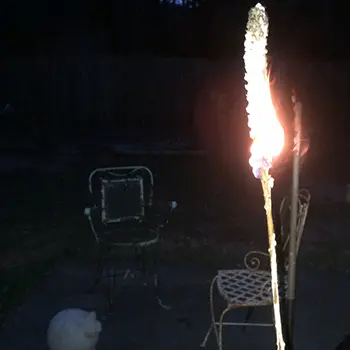
Noticing the properties of the once velvety leaves and their ability to hold an ember, an idea lit in my mind. I stripped the dry leafy portion off to expose the pinnate vein. The main vein became pliable with a light coat of coconut oil and absorbed the fuel like dry sponge.
Bingo!
I’ve made mullein torches with my grandson before.
Soaking the dry seed head in oil, resin, or wax makes a great tiki-type torch for night-time illumination. Hence the name Torch Plant. But burning a mullein torch inside a shelter or tent is not advisable. You’ll need a safe, controlled source of light.
Hummmmm…
Could the Torch Plant leaf serve as a slush lamp wick?
Yup!
Remember to never leave an open flame unattended.
How to Make Your Own Slush Lamp
Here’s the stuff you’ll need…
- Small container – Altoids tin, sea shell, aluminum foil, etc. – more container ideas below
- Fuel – coconut oil, olive oil, cooking oil, rendered animal fat
- Mullein leaf(s)
- Beer bottle cap (optional)
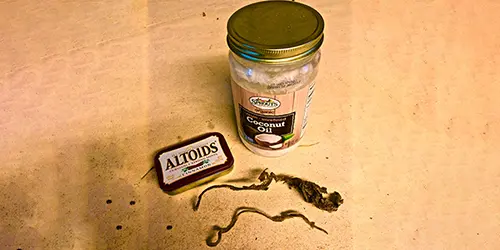
Step 1: The Wick
Common Mullein (Verbascum thapsus) has many practical uses for self-reliance. Other natural fibrous plants can be used as well. However, with mullein, you won’t have to twist any fibers into cordage. Simply remove the dry leafy portion from the vein and saturate the wick in oil.
Fashion the bottom of the vein in a simple overhand knot forming a lasso-like loop as the base of the wick. Bend and form the tag end of the wick so that 1/4 to 1/2 inch is above your oil.
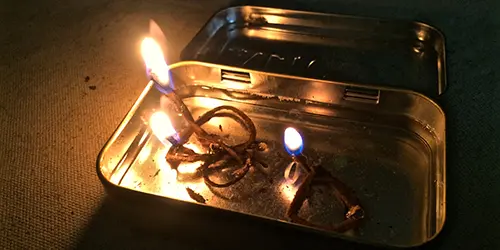
Richard, a friend of mine, recommended using another technique to support the wick. Punch a hole in a bottle cap, feed the wick through and place it on the bottom of your container.
This camp hack is worth the price of admission…
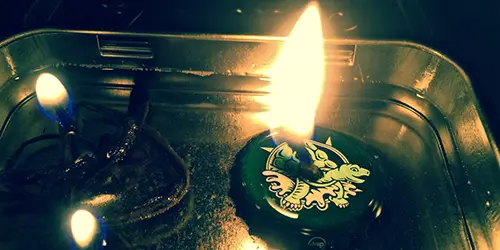
Thanks to Terrapin Beer Co. and Richard’s brilliant idea, my slush lamp took on a new form of awesome!
Step 2: Fuel
I used coconut oil from my bushcraft mess kit. It liquefies once it touches your skin (melting point is 76º F). Apply a generous coat to the leaf vein. Add 1/4 inch of oil to your container.
Place the looped wick in the container with the tip above the oil level. Lean the wick over the outside edge of the container if additional support is needed and there are no bottle caps available.
WARNING: Seems like common sense but I need to add this disclosure. Do not use flammable liquid like white gas or gasoline. It will explode and ruin your day! If this does not compute, take up another hobby.
Step 3: Container
An Altoids tin works fine for this application. Unlike olive or vegetable oils, coconut oil solidifies in colder weather preventing it from leaking all over your pack while on the move.
Simple makeshift containers can be found in nature or crafted from supplies in your pack. Ideas include:
- Aluminum foil
- Rocks with an indention
- Wood with knot holes
- Dehydrated food pouches
- Large leafs from sycamore trees laid in a small indention in the ground
- Duct tape fashioned into a bowl… yep, a crazy amount of uses for this stuff!
Wicks can be added to the long list of uses for this plant. Over a thirty minute test, I had to adjust the hight of the wicks a couple of times. Other than those few tweaks, the slush lamp provided a steady, reliable source of light.
Torch Plant and Fire Craft
Mullein is my most dependable spindle material for friction fire via the hand drill. Below is a picture of two pieces of mullein stalk lashed together to form a hearth board. My old faithful mullein spindle, cracks and all, created a coal in the crevice between the two-stick hearth board.
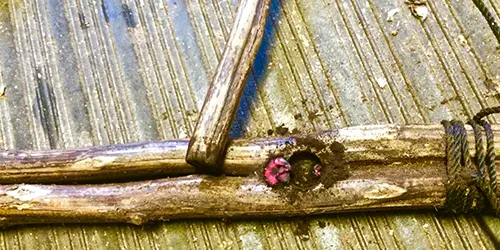
The take away from this tutorial is to stay curious and observant as you practice self-reliance skills. You never know what you’ll discover!
Hope this helps if you ever need an emergency source of lighting.
What other natural plant material have you used for slush lamp wicks?
This article was written by Todd Walker and first appeared on Survival Sherpa.
5 Mistakes To Avoid On Your Property
This Homemade Device Can Power Up Your Entire House 7 Days in a Row (Video)
Chicken Secrets Nobody Told You About
How to Make Firebricks (fire logs) and Wood Stove Logs for Free

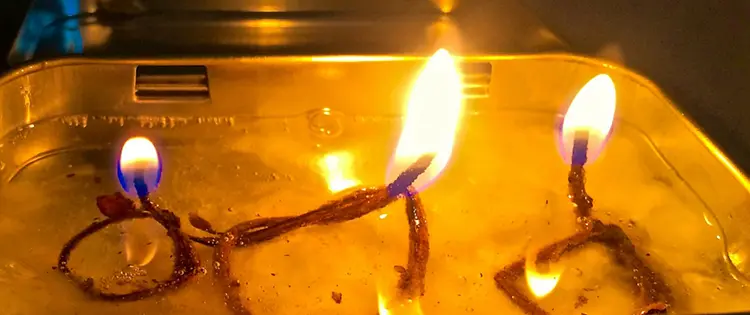














You don’t show us what a Mullein plant looks like so we will be able to identify it in nature. Where does it typically grow?
You can find mullien along the sides of the road and in poor soil conditions. The plant is flat to the ground (prostate) leaves are world, and hairy but the big thing to look for in the summer is the tall single flower stock that 3 ft to 5 ft+ tall with yellow flowers. Good plant to know many pictures on the net.
Too bad I don’t have a clue what mullein looks like, where to find it, or whether I need to prepare it for burning.